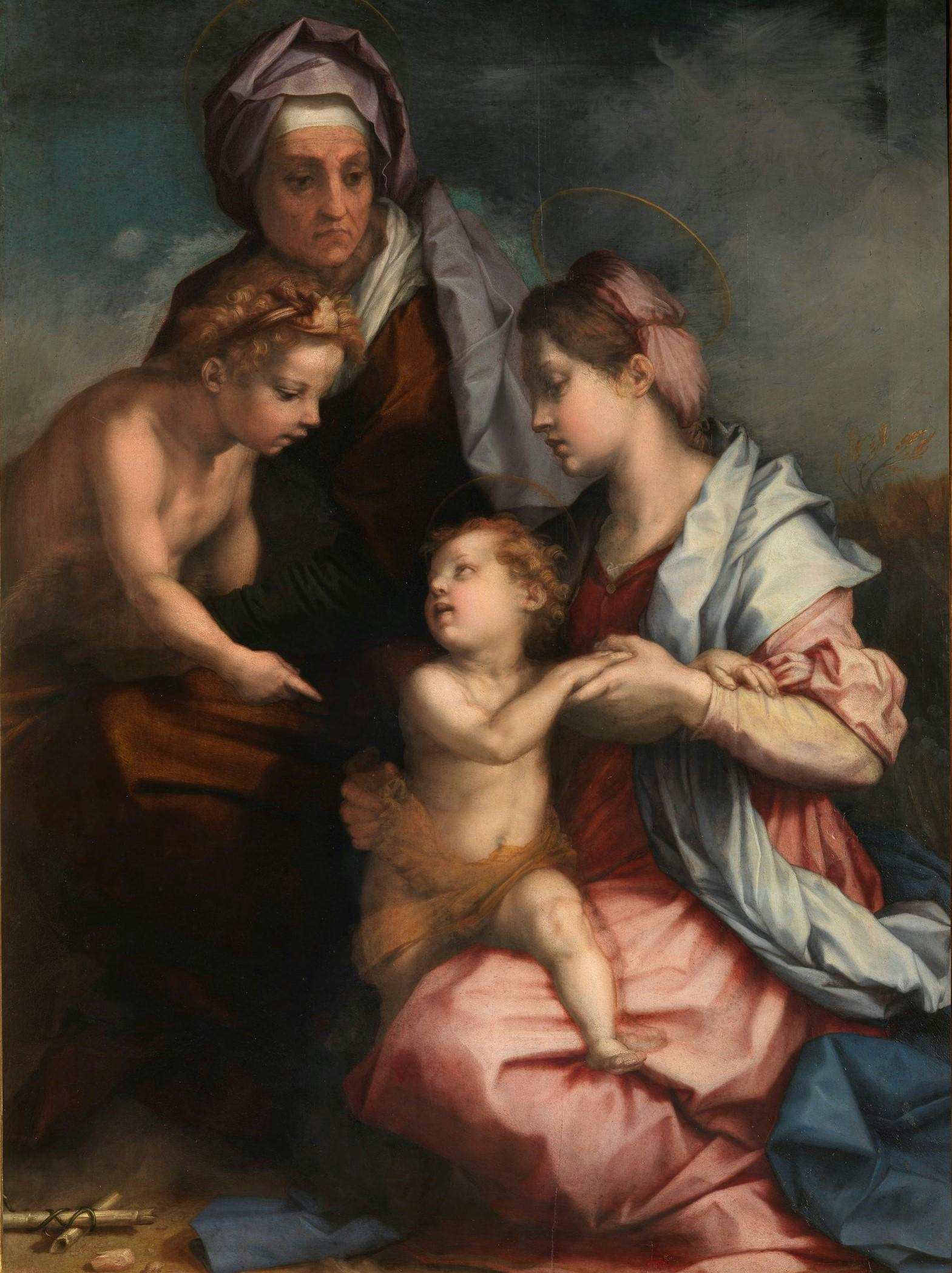Virgin and Child, St. Elizabeth and the infant St. John the Baptist (Medici Holy Family)
Andrea d'Agnolo, known as Andrea del Sarto (Firenze 1486 – 1530)
The scene is built with a diagonal layout of the four figures intent in a silent connection based on gazes and gestures. The melancholy Virgin in the foreground is contrasted with the composure of Elizabeth behind her; similarly, Jesus steps over his mother’s lap, while turning towards the young St John, who by contrast, is leaning outwards, indicating the baby to Elizabeth. The surrounding elements are extremely synthetic, limited to a sky dense with clouds, a sparse shrub, a small cross and some abandoned stones on the ground, giving the scene a feel of silent suspension. The expert clarity of the composition is accompanied by the perfectly executed, calibrated drawing of the draped clothing: the light from the left enhances the choice of dull colors, red, ash blue, burnt brown, and violet, in line with the Andrea del Sarto's style choices in his later works. The painting was originally for Ottaviano de’ Medici, a central figure in political and cultural life in Florence, both during the Republic and in the period of Cosimo I’s duchy. Vasari tells how, during the siege of Florence, an imprisoned Ottaviano had given up the painting but del Sarto had faithfully kept to the original agreement, refusing all offers until he could give the work to his client who, once freed, “paid him double”. It is not known when the Medici Holy Family joined the grand ducal collections, but it was first displayed in the Tribuna in 1589 and moved to Pitti in 1635.
